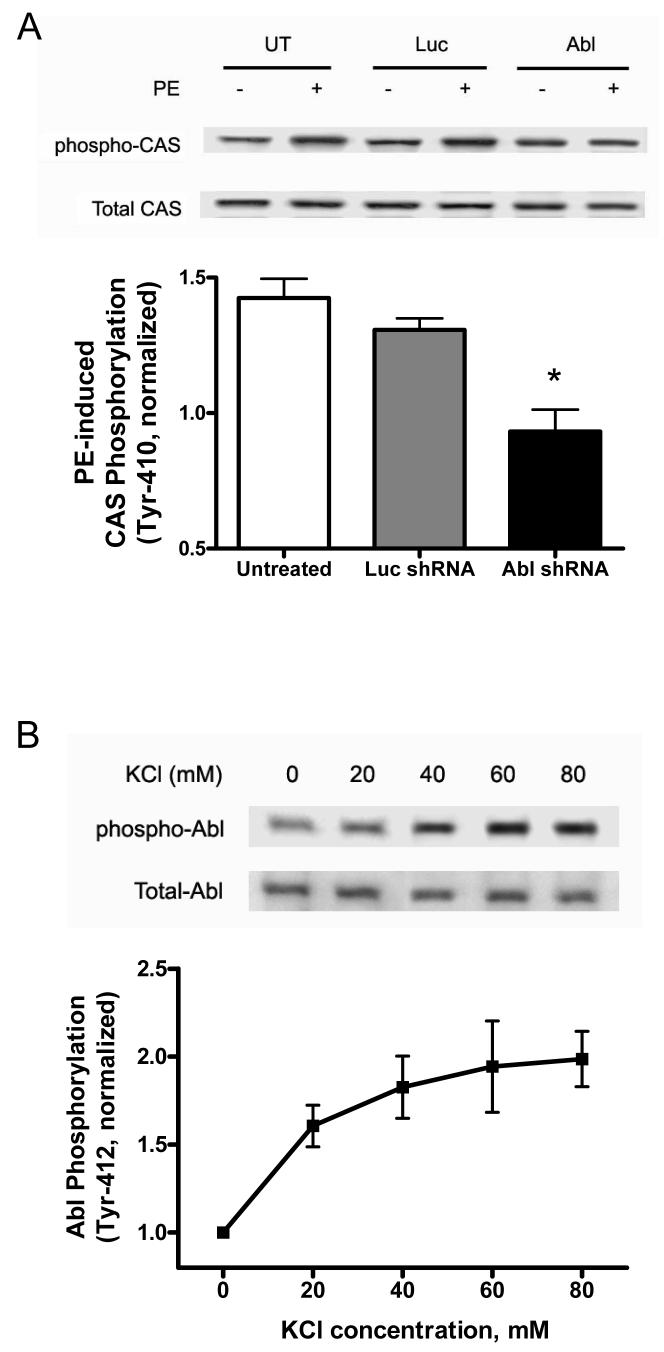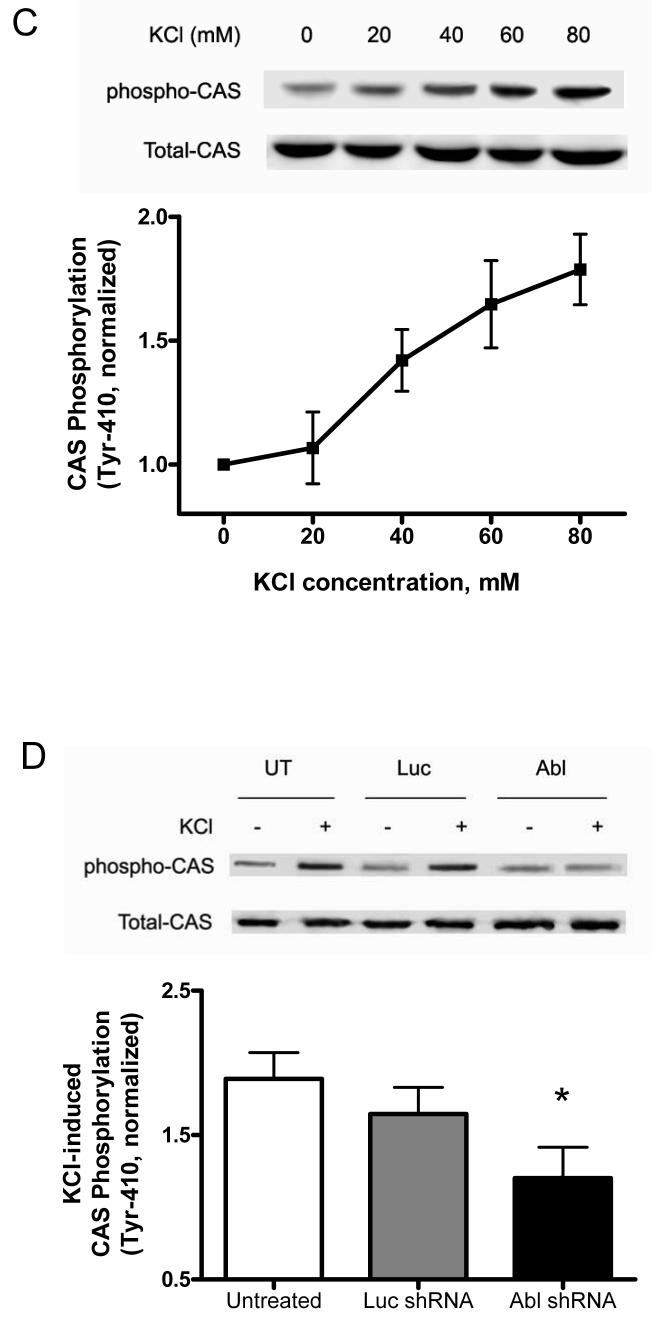Figure 4. CAS phosphorylation in response to contractile stimulation is diminished in Abl-deficient arteries.
(A) Blots of extracts from resistance arteries that had been treated with plasmids encoding Luc shRNA or Abl shRNA, or untreated arteries were detected with use of phospho-CAS (Tyr-410) antibody, stripped, and reprobed with (total) CAS antibody. CAS phosphorylation upon stimulation with PE was depressed in Abl-deficient arteries (n = 5). Values are normalized to the phosphorylation level in corresponding unstimulated arteries. (B) Representative blots illustrate the effects of KCl stimulation (5 min) on Abl phosphorylation (Tyr-412). KCl-stimulated Abl phosphorylation is normalized to the level of unstimulated tissues (n = 5). (C) Representative blots show the increase in CAS phosphorylation (Tyr-410) upon KCl stimulation (5 min). The level of CAS phosphorylation elicited by KCl is normalized to the value of unstimulated arteries (n = 5). (D) Representative blots illustrate the effects of Abl silencing on KCl-induced CAS phosphorylation. Values are normalized to the phosphorylation level in corresponding unstimulated arteries (n = 5). Values are mean ± SE. *Significantly lower levels upon PE or KCl stimulation compared to corresponding untreated (control) arteries or tissues treated with Luc shRNA (P < 0.01).


